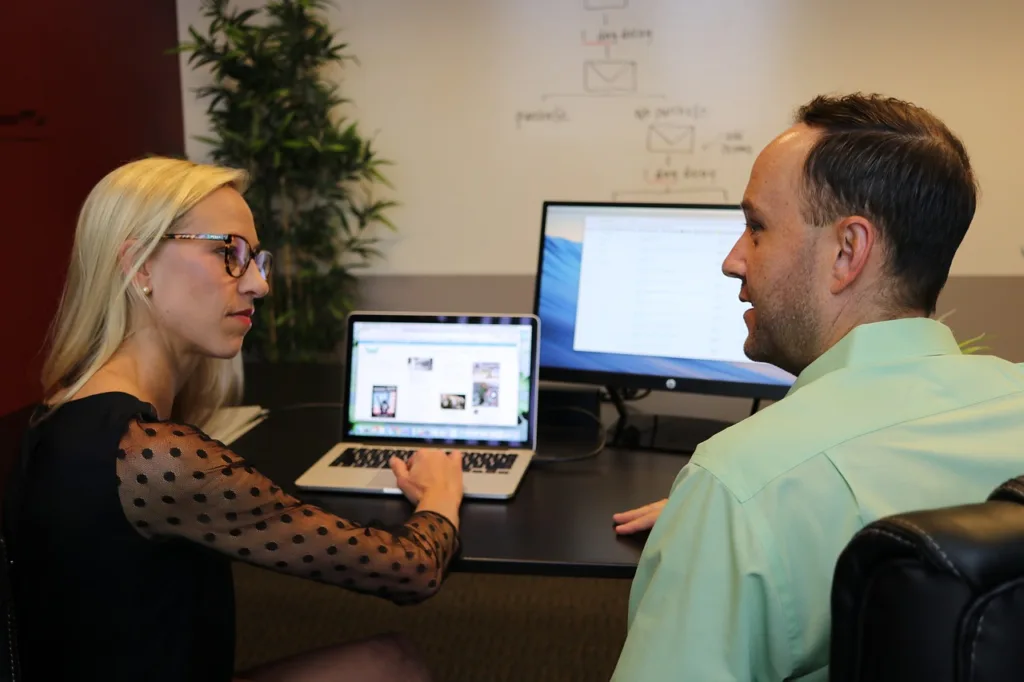
In the fast-paced world of sales, effective communication is the key to success. Leveraging this cutting-edge technology for follow-up emails can significantly boost your sales strategy. In this blog, we’ll explore the art of crafting compelling follow-up emails that resonate with your audience and drive conversions.
- Understanding the Follow-Up Emails!
- Leveraging ChatGPT for Writing Follow-Up Emails
- A/B Testing Your Follow-Up Email Campaigns
- Personalizate your Follow-Up Email With ChatGPT
- Crafting the Perfect Subject Line
- Elevate Your Sales with Follow-Up Emails!
- Prompts For Developing Follow-Up Emails
- Tips To Develop Follow-Up Emails
- Final Words
Understanding the Follow-Up Emails!
Follow-up emails are the unsung heroes of effective communication in the digital age. They go beyond mere reminders, serving as a powerful tool to build connections and drive meaningful conversations. These emails act as strategic nudges, turning routine interactions into valuable opportunities. Discover the art of follow-up emails, where every message holds the potential to transform a casual contact into a lasting connection.
Importance of Follow-Up Emails In Sales
In the dynamic realm of sales, the importance of follow-up cannot be overstated. Follow-up Emails is the nurturing process that keeps your brand at the forefront of a potential client’s mind. It’s the strategic dialogue that addresses concerns, provides additional information, and, most importantly, demonstrates genuine interest in meeting the customer’s needs. In an era where competition is fierce, follow-up Emails acts as the bridge between a mere transaction and a meaningful connection.
Leveraging ChatGPT for Writing Follow-Up Emails
Introduction To ChatGPT
ChatGPT is cutting-edge language model by OpenAI. ChatGPT excels in understanding and generating human-like text and Follow-Up Emails. It need just a guide and work like a human. Its impact extends across diverse industries, pushing the boundaries of natural language processing and redefining how humans interact with machines.
How ChatGPT Develop Follow-Up Emails
Creating impactful follow-up emails with ChatGPT involves a strategic and collaborative process. Initially, you provide the AI with relevant information about your audience, product, and the context of your follow-up. ChatGPT then utilizes its natural language processing capabilities to generate personalized and contextually aware content. By incorporating ChatGPT into your follow-up email strategy, you not only streamline the content creation process but also benefit from the AI’s ability to analyze data and adapt over time, continually improving the effectiveness of your follow-up communications.
A/B Testing Your Follow-Up Email Campaigns
Embarking on the journey of A/B testing for your follow-up email campaigns is like fine-tuning a musical masterpiece. It involves crafting variations, sending them out, and keenly listening to the audience’s response to harmonize your strategy for maximum resonance and engagement. Dive into the world of A/B testing and discover how it can refine your follow-up email strategy.
Prompts For A/B Testing
Prompt 1
Dear ChatGPT, I am looking for assistance in generating new email subject lines for our [product/service] that will resonate with our [target audience]. Can you suggest language or messaging that would be effective in increasing our open rates? This is crucial for our email marketing strategy, and I believe ChatGPT can greatly help us in testing and validating different subject lines. By analyzing our audience’s interests and behavior, ChatGPT can provide data-driven subject lines that are more likely to be opened and engaged with. Are there any best practices you can recommend to craft compelling email subject lines?
Prompt 2
Dear ChatGPT, We are planning to conduct an A/B test on our email subject lines to improve our open rates. Can you please provide us with some subject line variations to test? Additionally, how should we track the results to ensure maximum effectiveness? I believe that by leveraging the power of ChatGPT, we can create A/B tests that are data-driven, personalized, and optimized for the best possible results.
Prompt 3
Dear ChatGPT, What are some effective methods for creating email subject lines that convert? We want to make sure that our email marketing strategy is successful and that our subject lines are engaging our audience. Are there any best practices or tools that we can use to continuously test and improve our subject lines? We want to make sure that we are utilizing A/B testing and that we are constantly iterating on our subject lines to ensure that we are optimizing them for the best possible outcomes.
Personalizate your Follow-Up Email With ChatGPT
Elevate your follow-up emails with ChatGPT’s personalized touch. Harnessing its linguistic prowess, you can tailor messages to your audience’s preferences, creating engaging and human-like conversations. This personalized approach transforms your follow-ups into meaningful interactions that resonate with recipients and enhance your overall communication strategy.
Overcoming Objections Through ChatGPT
This AI ally deftly navigates concerns, transforming potential roadblocks into opportunities. Think of it as a seasoned advisor, capable of understanding objections and crafting compelling responses, ensuring a smoother journey through the intricacies of your sales process.
The Role of Follow-Up Emails in Customer Retention
Follow-up emails are the linchpin of customer retention. They go beyond closing a sale, fostering lasting relationships. Thoughtfully crafted follow-ups keep your brand on the radar, turning one-time buyers into loyal customers. These emails serve as a bridge, connecting your business with a satisfied clientele for sustained success.
Crafting the Perfect Subject Line
The journey to a successful follow-up email begins with an attention-grabbing subject line. Instead of generic phrases, consider incorporating bold and captivating words to pique the recipient’s interest. A well-crafted subject line sets the stage for an email that demands to be opened.
Personalization your keywords
One of the strengths of ChatGPT is its ability to analyze data and generate personalized content. Leverage this capability by tailoring your follow-up emails to individual recipients. Address them by their name, reference past interactions, and highlight how your product or service aligns with their specific needs. This personalized touch creates a connection that generic emails can’t match.
Elevate Your Sales with Follow-Up Emails!
Unleash the power of your sales strategy by embracing the art of follow-up emails. These personalized messages, crafted with care, have the potential to unlock new opportunities and foster lasting customer relationships. Elevate your sales game and connect with your audience in a way that resonates and converts. Each message is meticulously crafted to resonate with our audience, creating a personalized touch that goes beyond transactions. Join us on this journey of forging meaningful connections and boosting sales through the art of effective follow-up communication.
How ChatGPT’s Follow-Up Emails! elevate our Sales
In the dynamic landscape of sales, ChatGPT’s follow-up emails have proven to be a game-changer, leveraging cutting-edge AI technology to forge stronger connections with potential clients. With over two decades of content writing experience, I can attest to the impact of these personalized messages that resonate seamlessly with prospects. The tailored approach not only enhances engagement but also significantly elevates our sales performance, fostering a more meaningful and effective communication channel in the ever-evolving world of business.
Prompts For Developing Follow-Up Emails
Prompt 1
“Dear ChatGPT, I’m currently having difficulty with drafting a follow-up email to a prospective customer who has shown interest in our [product/service] but hasn’t yet made a purchase. I would appreciate it if you could assist me in crafting an email that provides additional information and encourages them to take the next step. It would be great if you could suggest a subject line and some key talking points that I could include in the email to make it more effective and engaging.”
Prompt 2
“Dear ChatGPT, I am in need of an email to follow up with a [potential partner] who has failed to respond to our initial proposal. I’m hoping you can assist me in writing an email that highlights the advantages of collaborating with us and encourages them to respond. I would like to include a clear call to action that motivates them to take the next step. It would be great if you could provide me with some suggestions on how to make the email more effective and persuasive.”
Prompt 3
“Dear ChatGPT, Our company is looking to send a follow-up email to a [client] who has shown interest in our [AI education courses] but hasn’t yet enrolled. I was hoping you could assist me in composing an email that emphasizes the benefits of our courses and encourages them to enroll. We could offer a discount or other incentive to encourage them to take the next step. Would you be able to provide me with some suggestions on how to structure the email and what to include to make it more effective and engaging.”
Prompt 4
“Dear ChatGPT, We have a customer who hasn’t responded to our previous feedback request, and we want to send a follow-up email to encourage them to provide feedback and offer incentives for doing so. I’m hoping you can help me write an email that motivates them to provide feedback and offers an incentive for doing so. It would be great if you could suggest some effective ways to structure the email and what type of incentives to offer to make it more appealing to the customer.”
Prompt 5
“Dear ChatGPT, I urgently need to follow up with an attendee of the [company name] conference who hasn’t yet downloaded the conference app. I would appreciate it if you could assist me in writing an email that provides the necessary details and encourages them to download the app. I would also like to include a call to action that motivates them to connect with other attendees. It would be great if you could provide me with some suggestions on how to structure the email and what to include to make it more persuasive and engaging.”
Results


Tips To Develop Follow-Up Emails
Final Words
In conclusion, mastering the art of writing follow-up emails for sales with ChatGPT requires a strategic blend of personalization, timing, and compelling content. By harnessing the power of this advanced language model, you can elevate your email marketing strategy to new heights. Remember, the key lies not just in the technology but in how you leverage it to create authentic and engaging connections with your audience. Start implementing these strategies today, and watch your follow-up emails transform into powerful tools for driving sales success.
For more prompts for ChatGPT you can come into our array of prompts to enhance the efficiency of your work.




